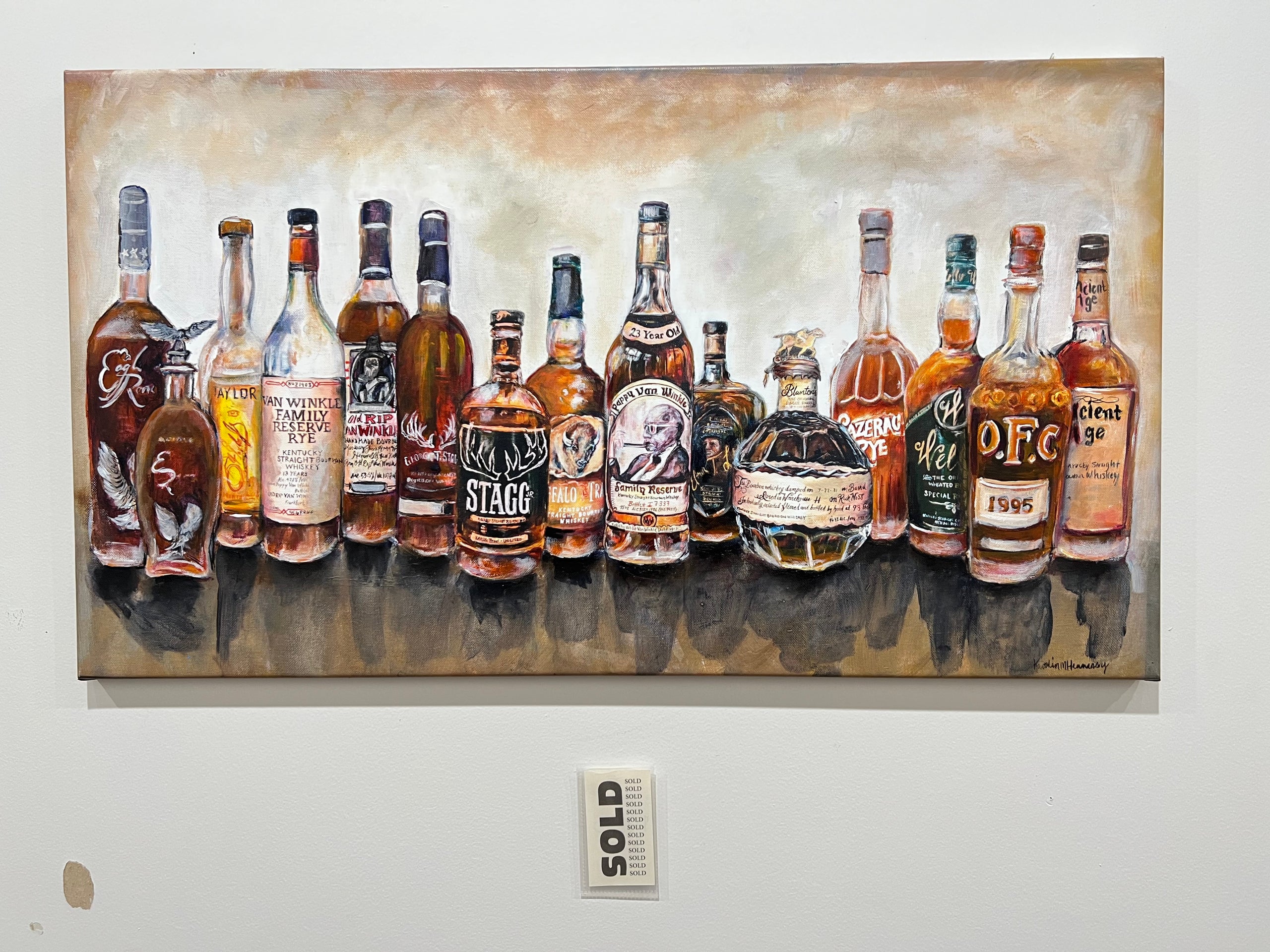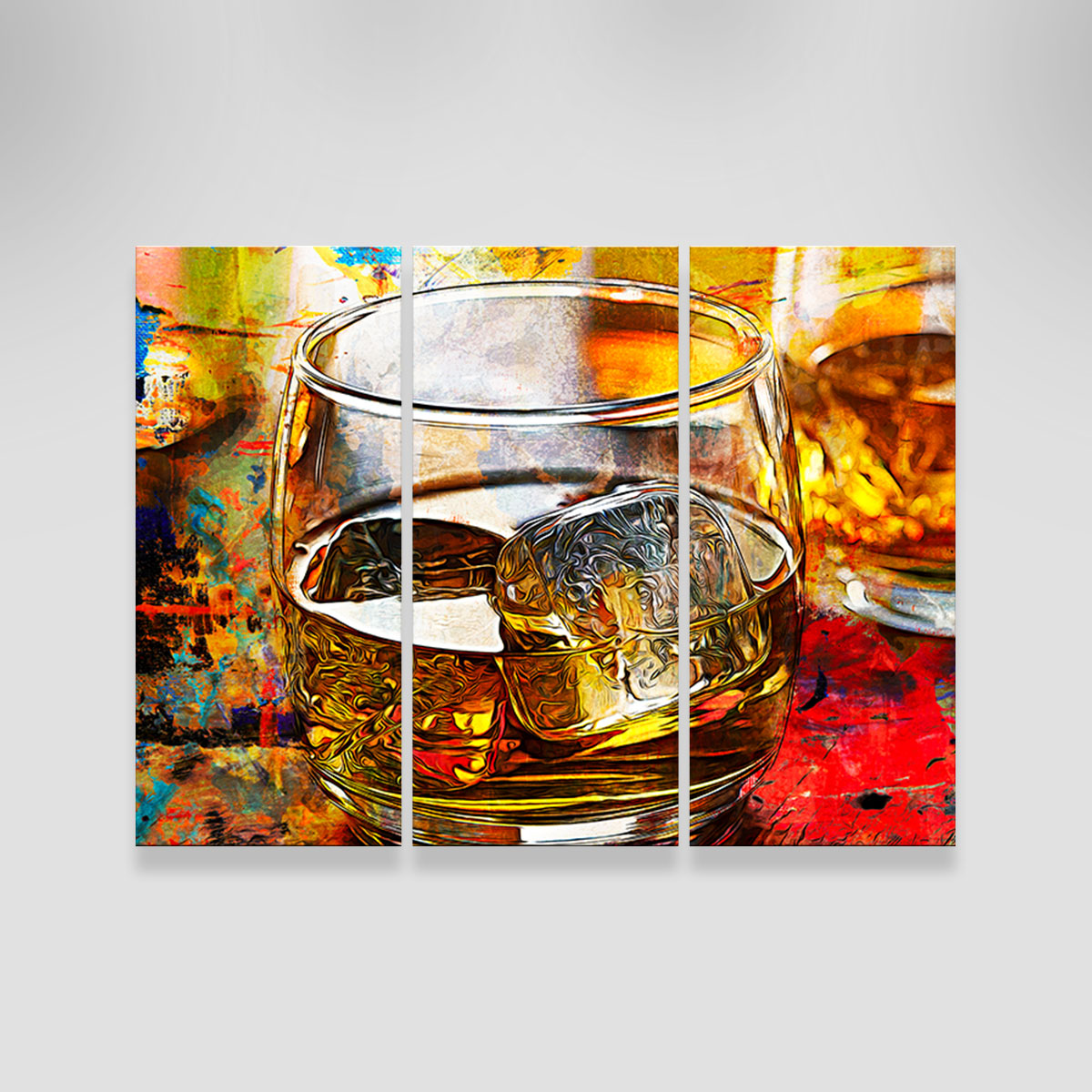The Importance of Whiskey Art in Celebrating Heritage and Craftsmanship in the Beverage Sector
The detailed partnership in between bourbon art and the event of heritage and workmanship within the beverage market can not be overstated. Through attentively made tags and containers, whiskey brand names envelop their historic roots and the artisanal skills that define their manufacturing approaches. This imaginative dimension not only boosts market allure yet likewise functions as a conduit for social narration, promoting a deeper link in between the craft and the consumer. As we discover the different aspects of this topic, intriguing inquiries concerning the impact of modern-day fads on standard practices arise, motivating additional examination.
The Historic Roots of Whiskey
At the heart of bourbon's appeal lies a rich tapestry of historic roots that map back to ancient people. The origins of scotch can be connected to the distillation techniques of the Sumerians and Babylonians around 2000 BCE, where early types of fermented grain drinks began to arise. However, it remained in the Center Ages that the art of distillation advanced considerably, specifically in Ireland and Scotland, resulting in the development of bourbon as we understand it today.
The term "whiskey" itself obtains from the Gaelic word "uisce beatha," suggesting "water of life." This phrase underscores the cultural value of bourbon in Celtic societies, where it was typically linked with routines, celebrations, and common bonding. By the 15th century, purification became an acknowledged craft within reclusive areas, leading the way for the establishment of legal distilleries.
As trade paths broadened, scotch's appeal expanded, going beyond local borders and recording the interest of connoisseurs worldwide. Whiskey Art. This historical trip mirrors not just the workmanship behind bourbon manufacturing yet additionally its indispensable duty in social and social contexts, noting it as a substantial drink throughout background
Artistic Expression in Branding
Scotch branding stands as an engaging crossway of creativity and commerce, where visual identity plays an essential role in shaping consumer assumption. The visual appeals of whiskey labels, product packaging, and advertising and marketing products show not only the brand's tale yet additionally its core values and heritage. Through artistic expression, distilleries share a story that resonates with consumers, stimulating feelings and stimulating connections.
Using color, typography, and images in branding serves to differentiate items in a saturated market. Standard motifs might evoke a feeling of authenticity and workmanship, while modern styles can signify advancement and forward-thinking. This strategic creative direction improves brand name recognition and commitment, allowing consumers to build a personal connection with the whiskey they select.
In addition, creative expression in branding often works as a celebration of local heritage. Distilleries frequently include local symbols or historic recommendations into their layouts, developing a local color that invites consumers to take part in a wider social experience. Ultimately, the creativity behind bourbon branding not just enhances visual charm yet also enriches the general story of the brand name, cultivating a deeper gratitude for the workmanship and heritage ingrained in each container.
Workmanship in Bottle Design
The artistry obvious in scotch branding expands past aesthetic identification to encompass the craftsmanship involved in bottle style. Each bottle functions as a vessel not just for the spirit within, however likewise for the tale it outlines its practice, beginning, and top quality. The design process requires thorough focus to information, as components such as product, closure, and shape add substantially to the general understanding of the whiskey.
Workmanship in container style includes selecting top quality glass that can enhance the bourbon's shade and clearness, while also providing a responsive experience for the customer. The silhouette of the container need to be both cosmetically attractive and functional, often mirroring the heritage of the brand. Many distilleries choose special shapes or printed logos that evoke a feeling of credibility and history.
Moreover, the tag design and typography play a crucial duty in interacting the brand name's narrative. Bourbon Art. A well-crafted container not only mesmerizes the consumer's eye however also reinforces the brand name's dedication to quality and practice. In this way, the workmanship of bottle layout becomes an essential aspect of the bourbon experience, merging creativity with a profound respect for heritage
Social Importance of Bourbon Art
Celebrating custom and workmanship, the cultural value of whiskey art goes beyond mere visual appeals, intertwining with the historic and social stories of the areas where it originates. Each bottle acts as a canvas, illustrating the unique tales, folklore, and customs that have actually shaped regional whiskey-making techniques. The intricate styles often reflect the heritage of the distillers, integrating icons and motifs that resonate with the culture and worths of their areas.

In enhancement, whiskey art plays a crucial role in common celebrations and events, acting as a tangible web link in between people and their shared experiences. By valuing the creativity in bourbon packaging, customers grow a deeper understanding and regard for the craft, inevitably enriching their satisfaction of the drink itself.
Modern Trends in Whiskey Discussion
In current years, the presentation of scotch has actually evolved to show modern preferences and trends while still honoring standard workmanship - Whiskey Art. Distilleries are progressively concentrating on visual elements that improve the total alcohol consumption experience, bridging the gap between heritage and modernity
Cutting-edge container designs have emerged, typically including lasting products and artistic labels that tell compelling stories. Lots of brand names currently collaborate with local artists, infusing their products additional hints with distinct visual expressions that resonate with consumers. Furthermore, limited-edition releases are commonly packaged in collectible containers, including worth and allure for aficionados.

Verdict
Finally, whiskey art serves as an essential conduit for revealing the heritage and workmanship integral in the beverage industry. With complex branding, cutting-edge bottle designs, and culturally significant creative click for more components, bourbon brand names effectively recognize their practices and get in touch with consumers. This imaginative narrative not only elevates the recognition of scotch yet additionally enhances area identification and satisfaction amongst manufacturers. Inevitably, bourbon art plays an important role in preserving and celebrating the rich cultural tapestry of whiskey-making.


Workmanship in bottle design entails picking top notch glass that can improve the whiskey's shade and quality, while likewise providing a responsive experience for the customer. In this way, the workmanship of container design becomes an essential element of the whiskey experience, combining creativity with a profound regard for heritage.
In final thought, bourbon art offers as an important avenue for revealing the heritage and craftsmanship integral in the beverage sector.